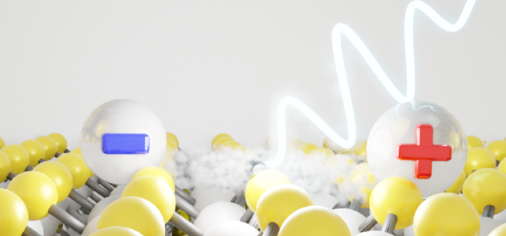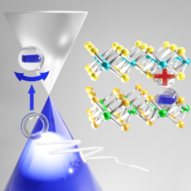
Computational Nanoscience: From Quantum Chemistry to Electron Dynamics
Lectures: Monday, 12:30 - 14:00, Thursday, 10:15 - 11:45, room: PHY 5.1.34B
Exercises: Thursday, 15:00 - 18:00, room: CIP-Pool PHY 1.0.02
Lecturers: Dr. J. Wilhelm, Dr. Š. Marek, M. Graml
Lecture period: 15.04.2024 - 19.07.2024
Links: Vorlesungsverzeichnis Lecture, Vorlesungsverzeichnis Exercises, Grips
Summary
In the last decades, density functional theory (DFT) has become one of the most used simulation methods to describe the quantum mechanical behaviour of electrons in an electrostatic potential of ion cores and other electrons. Such a system is known to us as a material or matter, in general. With DFT and close relatives, various ground state and excited state properties of the electrons on the nanoscale can be computed, for example the atomic configuration of a molecule on a surface. This lecture offers a pedagogical presentation of the conceptual ideas underlying DFT and its close relatives (as Hartree-Fock, wavefunction correlation methods and GW). With these methods, it is possible to treat comparably large systems (up to thousands of atoms) enabling direct comparison to experiments in many areas. Applications to problems in nanoscience, solid-state physics and quantum chemistry will be discussed. We will also discuss the extension of DFT to time-dependent problems, for example electron dynamics triggered by ultrashort laser pulses. In exercises, students apply state-of-the-art DFT packages to scientifically relevant examples.
Exercise sheets
Exercise sheets will be published on this webpage. For participants, it is optional to hand in the exercise sheets. Grading is available already during the discussion date for participants that request it.
Exercise Sheet 1 - Discussion 02.05.2024, Latest grading: 16.05.2024
Exercise Sheet 2 - Discussion 16.05.2024, Latest grading: 23.05.2024
Exercise Sheet 3 - Discussion 23.05.2024, Latest grading: 06.06.2024
Exercise Sheet 4 - Discussion 06.06.2024, Latest grading: 13.06.2024
Exercise Sheet 5 - Discussion 13.06.2024, Latest grading: 20.06.2024
Exercise Sheet 6 - Discussion 20.06.2024, Latest grading: 27.06.2024
Examination
Oral exam during the semester break (approx. 30 min, on lecture material and exercises, presumably two dates: mid of August 2024 and end of September 2024).
The lecture has 8 ECTS points, for further information see the module catalogue. Master students in Physics may have a look at the module description of Computational Physics, especially "13. Notes".
Outline (preliminary)
1. General information and content of the lecture
2. The many-electron problem
3. Computing properties from solutions of the many-electron problem
4. Analytical and qualitative theories for the many-electron ground state
5. Hartree-Fock method for the many-electron ground state
6. Wavefunction correlation methods for the many-electron ground state
7. Foundation of density functional theory (DFT) for the many-electron ground state
8. DFT with accurate kinetic energy: Kohn-Sham DFT
9. Approximations to exchange-correlation functionals
10. Some limitations of approximate exchange-correlation functionals
11. Potential energy surfaces from DFT
12. Single-electron energies and orbitals
13. GW approximation for quasiparticle energies
14. Review of time-dependent phenomena
15. Fundamentals of time-dependent DFT (TDDFT)
16. Linear-response TDDFT
17. Linear-response GW + Bethe-Salpeter
Prerequisites
This course presumes good knowledge of quantum mechanics, e.g. from the course Quantum Theory I. In the exercises, elementary computer skills are required, see first exercise sheet. Prior experience in any kind of programming language is not needed.
Literature
• Lecture notes are available from Grips.
• R. Parr and W. Yang, Density-Functional Theory of Atoms and Molecules, International Series of Monographs on Chemistry. Oxford University Press (1994)
• F. Jensen, Introduction to Computational Chemistry, Wiley, 2nd edition (2007)
• C. A. Ullrich, Time-Dependent Density-Functional Theory: Concepts and Applications, Oxford Academic (2011)
Illustrations
Simulation of liquid water on a layer of hexagonal Boron Nitride on a metal surface.

Absorption of light can excite bound electron-hole pairs in semiconductors.

